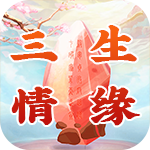1. 英語中的幾種時間表達
直接表示時間法:就是按照幾點幾分的順序來表示時間。
(這個最簡單)例如: 8:00——eight(o'clock) 5:20——five twenty 2添加介詞表示法 如果分數小于或等于30,就用past來表示,結構是“分鐘+past+該點鐘“;如果分鐘大于30,就用to來表示,結構是“分鐘+to+下一點鐘 例如: 12:05—— five past twelve 9:50——ten to ten 8:40——twenty to nine 溫馨提示:在第二種表示法中,如果分鐘是15,一般用a quarter 來代替fifteen; 如果分鐘是30, 一般用half來代替thirty。例如: 9:15——a quarter past nine 11:30——half past eleven 記住幾個例子就OK 啦 2:45——a quarter to three。
2. 英語中,時間的表達方法
英語中表示時間的詞語主要分為以下幾類:時間點、時間段、動作發生的頻度、動作或事件發生的先后。
一般可用單個副詞來表示,也可以用帶有介詞in, at, on和for的短語來表示。此外,一些不帶介詞的短語也可以用來表示動作(事件)發生(狀態持續)的時間。
一、單個副詞表示時間 1. 表示動作(事件)發生的時間 這類副詞常見的有:ago, before, lately, later (on), now, recently, then, today, tomorrow, tonight, yesterday等。例如: 1)It's beginning to rain now! (時間點)現在開始下雨了! 2)I haven't seen her recently. (時間段) 最近我沒見到她。
3)Will you be free tonight? (時間段) 你今晚有空嗎? 4)See you later. (時間點)回頭見。 2. 表示頻度 這類副詞常見的有:always, constantly, continuously, continually, ever, frequently, generally, hardly ever, much, never, normally, occasionally(偶爾), often, periodically(定期地,偶爾), rarely, regularly, repeatedly, seldom(很少), sometimes, usually, now and then(偶爾,有時)等。
例如: 1)She is constantly changing her mind. (頻度)她老是改變主意。 2)We do meet now and then, but not regularly. (頻度)我們確實偶爾也見面,但不經常。
3)Lester rarely left his room. (頻度)萊斯特很少離開他的房間。 3. 其他一些表示時間的副詞: 主要有:already, early, finally, first, immediately, just, late, long, presently, shortly, since, soon, yet等。
例如: 1)I'll be back presently(shortly). 我一會兒就回來。 2)What decision did you finally arrive at?你們最后做出了什麼決定? 3)Nancy was up early. 南希很早就起來了。
4)He has just had an operation. 他剛動過手術。 分析: 句1)中的presently (shortly)(不久,一會兒),強調從現在算起到將來的某一時刻,時間持續很短;句2)中的finally(最終)強調事件的最終結果;句3)中的early(早)表示動作發生的時間比通常所認定的時間早;句4)中的just表示從過去的某個時間算起到現在,時間持續很短。
二、前面帶有介詞in, at, on和for表示時間的短語 1. 帶有介詞in的時間短語: in a flash(瞬時), in a lucky hour(在幸運時刻), in an evil hour(在不幸的時刻), in a minute, in a second, in a short time, in a while, in advance(預先), in an instant, in broad day(在大白天), in due course(及時地), in future, in good season(及時地), in no time(馬上), in one's childhood, in one's spare time, in one's teens, in one's youth, in re-cent years, in some cases(有時候), in spring, in the beginning, in the daytime, in the end, in the long run(最后), in the meantime, in the morning, in the past, in this period, in those days, in time等。例如: 1)He was born in1980. 他生于1980年。
2)The policeman arrived intime and caught the thief in a flash. 警察及時趕到,瞬時抓住了那個小偷。 2. 帶有介詞on的時間短語: on a certain day, on Christmas Day, on night shift, on one's birthday, on schedule(按時), on Sunday, on the moment, on that date, on the eve of, on the following day, on the Monday morning, on the New Year's Eve, on the point of(正在……時候),on this day, on this occasion, on time等。
例如: 1)There are varieties of celebrations on Christmas Day. 圣誕節那天有多種慶祝活動。 2)When he heard the bad news, he burst into tears on the moment. 聽到那個壞消息,他的眼淚立刻奪眶而出。
3)He always arrives on time in time of an appointment. 約會時他總是很準時。 3. 帶有介詞at的時間短語: at a time(在某時), at a wedding(婚禮), at all times(一直), at any moment, at Christmas, at dark (天黑時), at dawn(在黎明), at daybreak, at dinner-time, at dusk(在黃昏), at first sight, at first, at last, at night, at nightfall, at noon, at present, at six o'clock, at sunrise, at sunset, at that moment, at that time, at the age of, at the beginning of , at the end of, at the last minute, at the moment, at the same time, at the stage(眼下), at the start, at this point(此時), at this sea-son, at times(有時)等。
例如: 1)At that time, Mary earned so little money that she could hardly af-ford a coat like this. 那時瑪麗掙錢很少,幾乎買不起這樣一件大衣。 2)At times, Robert is seen to be walking along with a beautiful girl. 有時可以看到羅伯特和一個漂亮女孩走在一起。
3)At the stage, Tom doesn't have enough time to write such a long paper. 眼下湯姆沒有時間寫那麼長的一篇論文。 分析: 句1)中的at that time(那時)表示某種境遇存在的時間段;句2)中的at times(有時)表示事件發生的頻度;句3)中的at the stage(眼下)表示離說話前后不久的一段時間。
4."介詞for + 表示時間的名詞短語"表示動作持續或狀態存在的時間段: for ten seconds, for five minutes, for an hour, for two days, for six months, for a year, for a decade, for a whole century, for a long time, for a short while等。例如: 1) 。
3. 英語中時間的表達
所有的時間都可以用“小時 + 分鐘”直接讀:
6:10 six ten
8:30 eight thirty
2:40 two forty
如果所表述的時間在半小時之內,可以用“分鐘 + past + 小時”:
6:10 ten past six
4:20 twenty past four
10:25 twenty-five past ten
如果所表述的時間在半小時之內,可以用“(相差的)分鐘 + to + (下一)小時”:
10:35 twenty-five to eleven
5:50 ten to six
9:49 eleven to ten
如果所表述的時間恰好為半小時,可以用“half + past + 小時”:
11:30 half past eleven
2:30 half past two
如果所表述的分鐘和15有關,就有三種表達法:
(15分鐘又叫一刻鐘:a quarter)
9:15 - nine fifteen ; fifteen past nine ; a quarter past nine
3:45 - three forty-five ; fifteen to four ; a quarter to four
整點:
現在是兩點整。
It's two.
It's two o'clock.
4. 英語時間表達.
英語時間表達如下:一.時間點的表達1.所有的時間都可以用“小時 + 分鐘”直接讀:1)6:10 six ten2)8:30 eight thirty3)2:40 two forty2.如果所表述的時間在半小時之內,可以用“分鐘 + past + 小時”:1)6:10 ten past six2)4:20 twenty past four3)10:25 twenty-five past ten3.如果所表述的時間在半小時之外,可以用“(相差的)分鐘 + to + (下一)小時”:1)10:35 twenty-five to eleven2)5:50 ten to six3)9:49 eleven to ten4.如果所表述的時間恰好為半小時,可以用“half + past + 小時”:1)11:30 half past eleven2)2:30 half past two5.如果所表述的分鐘和15有關,就有三種表達法:(15分鐘又叫一刻鐘:a quarter)1)9:15 nine fifteen ; fifteen past nine ; a quarter past nine2)3:45 three forty-five ; fifteen to four ; a quarter to four6.整點的表達:現在是兩點整。
It's two./It's two o'clock。另外英語中的 noon 和midnight 可分別直接表示白天和夜晚的12點:1)It's (twelve) noon。
現在是中午十二點。2)It's (twelve) midnight。
現在是半夜零點。7.大約時間:1)It's almost two。
馬上到兩點了。2)It's not quite two。
還不到兩點。3)It's just after two。
剛過兩點。8.若想表明是上午,可在時間后加上a.m。
如:thirteen past six a.m。(上午六點十三分)。
若想表明是下午,可在時間后加上p.m。如:four o'clock p.m。
(下午四點)。9.句子范例:1)It's nine forty-five。
=It's a quarter to ten。現在是九點四十五分。
2)It's two seventeen。=It's seventeen past two。
現在是兩點十七分。3)It's three。
=It's three o'clock。現在是三點。
4)It's nine thirty。=It's half past nine。
現在是九點半。5)It's six fifteen。
=It's a quarter past six。現在是六點十五分。
6)It's three fifty。=It's ten to four。
現在是三點五十。二.世紀、年代、年、月、日的表達1.世紀:1)用“定冠詞+序數詞+century”表示 例:在十七世紀 寫作:in the 17th century,讀作:in the seventeenth century2)用“定冠詞+百位進數+s”表示 例:在十七世紀 寫作:in the 1600s,讀作:in the sixteen hundreds 注意:這種情況下,實際表達的世紀數是阿拉伯數字本身加一。
2.年代 用“定冠詞+(世紀百位進數+十位年代數)+s”表示 例:在二十世紀三十年代 寫作:in the 1930s,讀作:in the thirties of the twentieth century或 in the nineteen thirties 表示某年代的早期、中期和晚期,可以在定冠詞后添加early, mid-和late 例如:在二十世紀二十年代早期 in the early 1920s 在二十世紀五十年代中期 in the mid-1950s3.年月日1)年份 ①讀年份時一般分為兩個單位來讀,前兩個數為一個,后兩個數為一個:1949 讀作:nineteen forty-nine或nineteen hundred and forty-nine ② 如果是三位數,先讀第一位,再把后兩個數合起來讀:253 讀作:two fifty-three或two hundred and fifty-three ③ 另外: 2000 讀作:two thousand,1902 讀作:nineteen hundred and two或 nineteen o two ④ 如果要使用year,year放在數詞之前 例如:in the year two fifty-three B.C.在公元前253年2)月份 月份是專有名詞,除了少數幾個月份外都有縮寫形式:January - Jan 一月 February - Feb 二月 March - Mar 三月 April - Apr 四月 August - Aug 八月 September - Sept 九月 October - Oct 十月 November - Nov 十一月 December - Dec 十二月 注意:縮寫形式后面的點不能省略,因為它是表示縮寫形式的符號。3)日期:用序數詞表示 例:十月一日 寫作:October 1, October 1st, 1 October, 1st October, (the) 1st of October等,其中的October都可以寫成縮寫形式Oct.讀作:October the first或the first of October4)年月日 用英語表達年月日的順序:① 月\日\年 例:2002年1月17日 寫作:January 17(th), 2002或January seventeenth, 2002(日和年之間需用逗號隔開) 讀作:January the seventeenth, two thousand and two ②日\月\年 例:2002年1月17日 寫作:17(th) January, 2002或the seventeenth of January, 2002(月和年之間需用逗號隔開) 讀作:the seventeenth of January, two thousand and two4. 介詞的使用:若指在哪一年或哪一月,用介詞in;若具體到某一天,需用介詞on。
例如:1)She was born in 1989。她出生于1989年。
2)She was born in August。她出生于八月。
3)She was born in August 1989。她出生于1989年8月。
4)She was born on 2nd August, 1989。她出生于1989年8月2日。
擴展資料 在英語中年月日的讀法和寫法 一.年份 關于四位數年份的讀法有下列幾種情形:1.一般情況下,將表示年份的四個數字按前后分為兩組,每一組的數字都按基數詞來讀。1865年讀作 eighteen sixty-five1998年讀作 nineteen ninety-eight2.如果是整百的年,后面的兩個“零”讀為 hundred。
1900年讀作 nineteen hundred1800年讀作 eighteen hundred3.十位數字上為“零”,該“零”讀為字母 O 的發音。1809年讀作 eighteen O nine4.關于千年的一些讀法。
2000年讀作 two thousand2008年讀作 two thousand and eight 或 O eight2017年讀作 two thousand and seventeen 或 two thousand seventeen5.三位以內數字的年份,一般是按照基數詞的方法來讀。531 BC 讀作 。
5. 英語中的幾種時間表達
直接表示時間法:就是按照幾點幾分的順序來表示時間。(這個最簡單)例如:
8:00——eight(o'clock) 5:20——five twenty
2添加介詞表示法
如果分數小于或等于30,就用past來表示,結構是“分鐘+past+該點鐘“;如果分鐘大于30,就用to來表示,結構是“分鐘+to+下一點鐘
例如:
12:05—— five past twelve
9:50——ten to ten
8:40——twenty to nine
溫馨提示:在第二種表示法中,如果分鐘是15,一般用a quarter 來代替fifteen; 如果分鐘是30, 一般用half來代替thirty。例如:
9:15——a quarter past nine
11:30——half past eleven
記住幾個例子就OK 啦
2:45——a quarter to three
6. 英語中問日期的各種句子的區別
第一句是今天幾號星期幾。回答一般用幾號和星期幾回答。比如,It's Sunday the 12th.
第二句是詢問今天星期幾。回答:It's Sunday.
第三句是詢問今天幾號。回答:It's January 12th.
第四句是詢問現在幾點了。回答:It's twelve thirty-seven.
第五句一般沒有這麼提問的(因為詢問日期就好了)。但是我也告訴你,意思是 這是幾月?回答:It's January.
第六句同上。這是那一年?回答:It's 2014.
你說的最后一句和上面第三句相同。同義句是What date is it today?

















